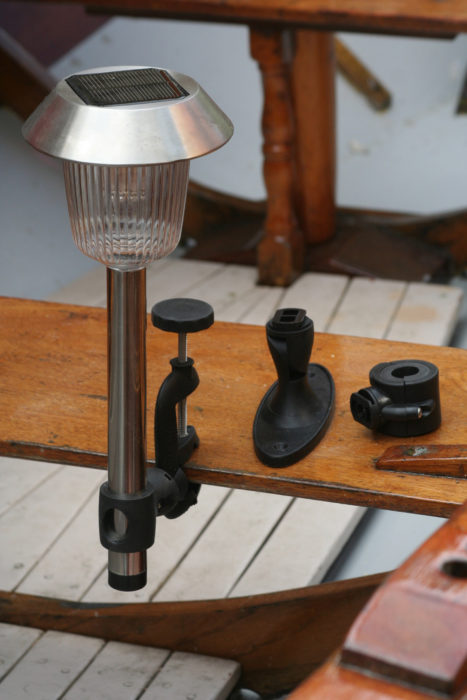 SBM
SBMThe Premium RailLight comes with a variety of attachment options.
RailLights may look like the post lights sometimes used to illuminate garden paths, but these solar-powered LED lights are designed for boating. They can provide for general illumination in a cockpit tent, cabin, or shore-side camp, and can, for some boats, serve as all-around white lights for navigation.*
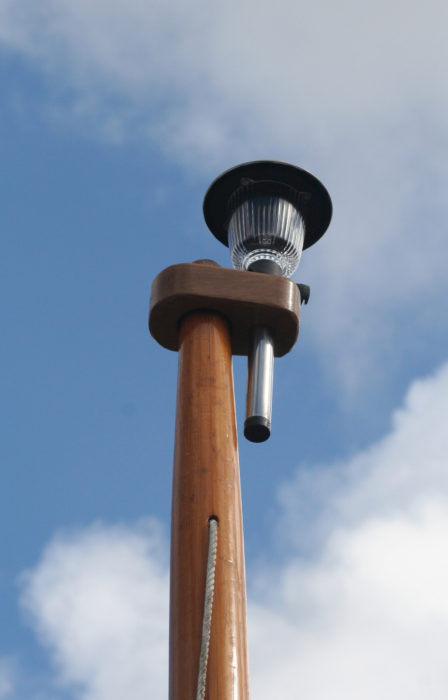 SBM
SBMA piece of oak with a large tapered hole for the mast and a 1″ hole for the Premium RailLight serves as a way to use it as an all-around light.
Constructed of marine-grade stainless steel, the lights are topped with a solar panel and light sensor epoxied in place. A small switch protected by a waterproof rubber boot, is tucked beneath, allowing the user to turn the lights on and off manually or to choose an automatic setting that activates them in the dark and shuts them off when daylight arrives. The units run on rechargeable batteries that, according to the manufacturer, will last for three to four hundred charges and up to three years. I appreciate that the RailLights are designed for batteries to be replaceable by the user, a feature significantly extending the potential life of the product.
 SBM
SBMThe Mini RailLight has hardware for attaching it to a stanchion or rail. The wooden base is homemade.
I tested both models: the 14″ tall RailLight Premium, with four LEDs, and the 11″ tall RailLight Mini, with two LEDs. The Premium has a more pronounced glow than the Mini but both were easily visible from about 2,000′ away, even in the perpetual twilight of an urban environment. The Mini with its smooth frosted surface and uniform light is better suited for task lighting. The Premium’s ribbed globe produced a dappled light, making it better for general area illumination. Neither was so bright that they significantly diminished my night vision.
The lights are water resistant, and after being subjected to several showers, there was no change in their performance. They charge up in daylight, even under cloudy conditions. In direct sunlight a two-hour charge , the best opportunity I could get this time of year, produced about one hour of light. Charging during partly cloudy days in late March produced 4 to 6 hours of light. The manufacturer notes both lights can produce “up to 8 hours of light on a full charge.” On the summer solstice here in Portland, Oregon, 8 hours and 20 minutes separate sunset from sunrise, so the RailLights may not be able to fill in as anchor lights. The Premium flashes as an alert when it is low on power. Given the simple, sturdy construction and basic solar technology, the potential for problems with these lights seems low.
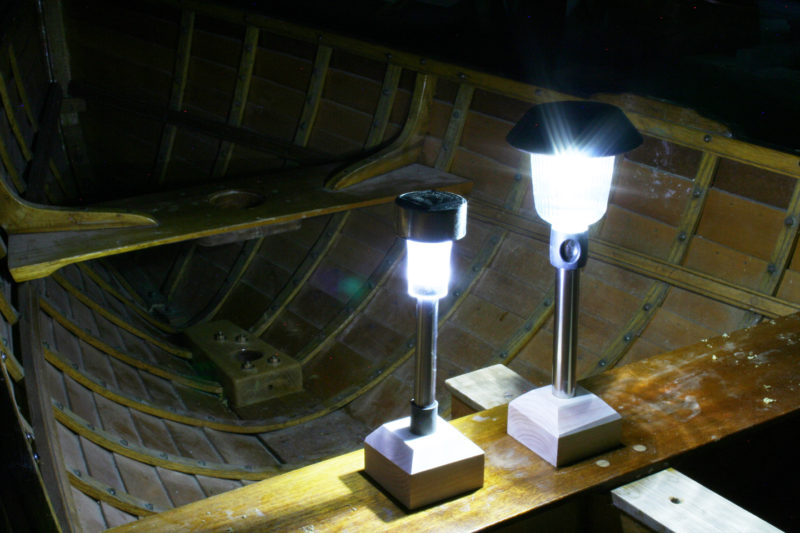 SBM
SBMSimple homemade wooden bases adapt the RailLights to tabletop or thwart-top use.
Each Raillight comes with mounting gear that can either clamp to a rail or be screwed into a flat surface. For small boats, a homemade mounting system will probably be most effective.
No matter how many batteries I have tucked away, I always worry that I’ll run out and regret how many have to go into the trash when they run through their charge. If you’re a worrywart like me, a RailLight in your quiver will allow you to focus on your adventure, not your gear.![]()
*On its list of USCG Minimum Equipment Requirements for Recreational Vessels the United States Power Squadron, a nonprofit boating educational organization, notes: “Sailboats and powerboats under 7m and under 7 knots can substitute a white lantern in place of required lights.” The list links this guideline to rowboats as well. —Ed.
Bruce Bateau sails and rows traditional boats with a modern twist in Portland, Oregon. His stories and adventures can be found at his web site, Terrapin Tales.
The RailLight Mini retails for $29.99 and the Premium for $39.99. Both are available from numerous retailers and direct from Davis Instruments.
Is there a product that might be useful for boatbuilding, cruising or shore-side camping that you’d like us to review? Please email your suggestions.
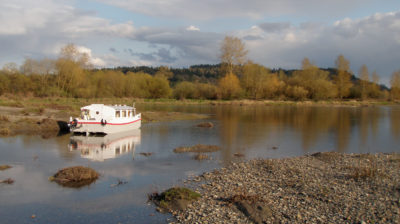
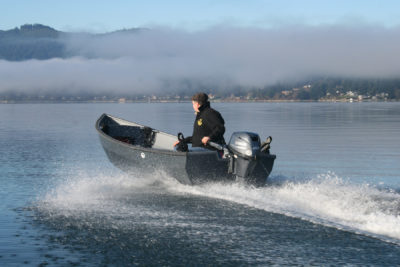
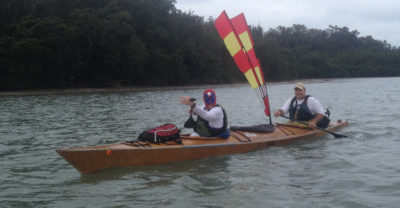
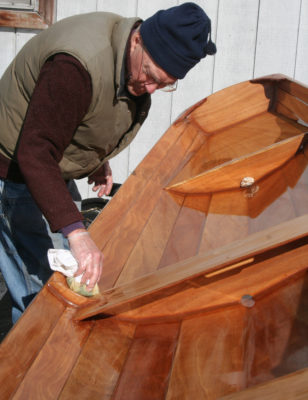
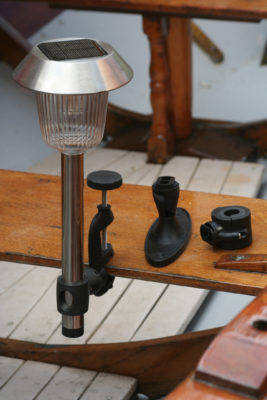
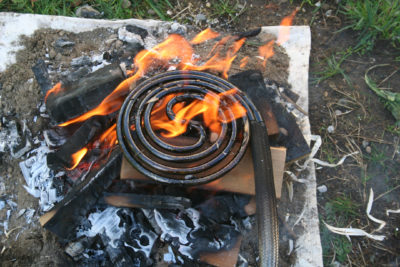
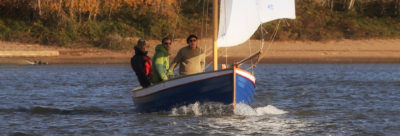
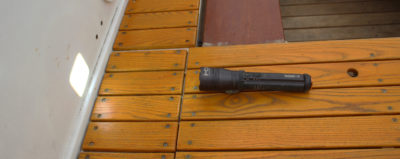
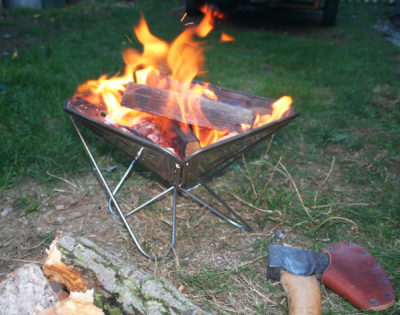
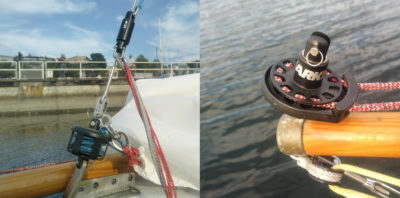
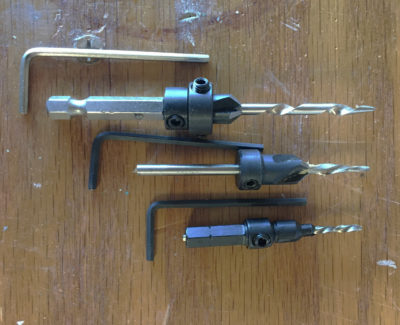
Join The Conversation
We welcome your comments about this article. If you’d like to include a photo or a video with your comment, please email the file or link.